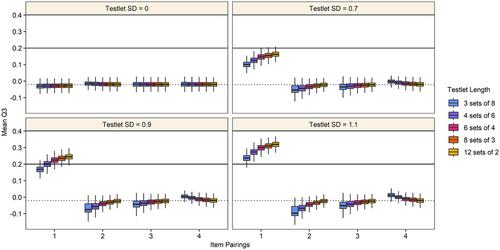再看日元Q3: 0.2是一个合适的临界值吗?
IF 1.6
4区 心理学
Q3 PSYCHOLOGY, APPLIED
引用次数: 0
摘要
这项研究检验了广泛使用的0.2的日元Q3阈值,这是一个侵犯地方独立的指数。具体而言,我们进行了模拟,以调查Q3值是否与可靠性、项目参数和被试能力估计的偏差大小有关。结果表明,低于典型截止值的Q3值在估计中产生了有意义的偏差。讨论了实际意义和局限性。本文章由计算机程序翻译,如有差异,请以英文原文为准。

Another Look at Yen's Q3: Is .2 an Appropriate Cut-Off?
This study examined the widely used threshold of .2 for Yen's Q3, an index for violations of local independence. Specifically, a simulation was conducted to investigate whether Q3 values were related to the magnitude of bias in estimates of reliability, item parameters, and examinee ability. Results showed that Q3 values below the typical cut-off yielded meaningful bias in estimates. Practical implications and limitations are discussed.
求助全文
通过发布文献求助,成功后即可免费获取论文全文。
去求助
来源期刊

Journal of Educational Measurement
Multiple-
CiteScore
2.30
自引率
7.70%
发文量
46
期刊介绍:
The Journal of Educational Measurement (JEM) publishes original measurement research, provides reviews of measurement publications, and reports on innovative measurement applications. The topics addressed will interest those concerned with the practice of measurement in field settings, as well as be of interest to measurement theorists. In addition to presenting new contributions to measurement theory and practice, JEM also serves as a vehicle for improving educational measurement applications in a variety of settings.
 求助内容:
求助内容: 应助结果提醒方式:
应助结果提醒方式:


